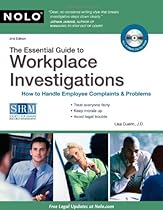It took Elin Betanzo eight years to stay home for three months with her first child.
She stockpiled leave for that long so she could dip into her time-off account at the U.S. Environmental Protection Agency after her son's birth. She forgot to plan for falling ill later.
"What I hadn't thought about in advance was the need for me to have plenty of sick leave when I came back," said Betanzo, 35, an engineer. "I wish that when I started working someone would have told me, 'Save for a house, save for retirement -- save if you ever want to take maternity leave.'"
The U.S. government doesn't provide a benefit many on Wall Street take for granted and that the European Union, Japan and Russia require. A bill introduced Feb. 10 to give federal employees four weeks paid time off to care for new children isn't likely to make it to a vote.
The measure's probable fate underscores that the U.S. has "the most family-hostile public policy" in the developed world, said Joan Williams, director of the Center for WorkLife Law at the University of California's Hastings College of the Law in San Francisco.
The U.S. is one of three nations of 181 studied by Harvard and McGill universities that don't guarantee working mothers leave with compensation, and researchers say it pays the price in lost productivity and health risks for children. The two other countries are Papua New Guinea and Swaziland.
"It's absurd that we don't have it," said Janet Gornick, a professor and director of the Luxembourg Income Study Center at the City University of New York Graduate Center. "Our employment profile no longer looks very good for women overall. The absence of leave is part of the story."
Twelve Unpaid Weeks
The U.S. government employs about 2.85 million, 1.22 million of them women, according to the Bureau of Labor Statistics. India's central government payroll is 31.6 million, 3.06 million of them female, and Indonesia has 4.6 million civil servants, of whom 2.14 million are women, according to government data. Chinese government agencies employed 11.93 million in 2008, while Brazil has 1.11 million federal workers, official statistics not broken down by gender show.
In the U.S. -- where 47 percent of the workforce is female -- anyone employed for at least 12 months by a business with a payroll of at least 50 may take 12 unpaid weeks and not lose their jobs under the Family Medical Leave Act. The 1993 law covers about half the workforce, including federal employees.
'Economic Losses'
While maternity leave with pay is a perquisite at Bank of America Corp., Goldman Sachs Group Inc. and other big financial institutions, most employers in the U.S. don't provide the benefit. The number offering fully paid leave fell to 16 percent in 2008 from 27 percent in 1998, according to a study by the New York-based Families and Work Institute.
A 2010 survey of human resources managers at 534 companies by the Society for Human Resource Management in Alexandria, Virginia, found 17 percent offer leave with pay and another 7 percent plan to reduce or eliminate it within 12 months.
"If we don't make motherhood and work compatible, there are long-term economic losses," said Robert Drago, research director at the Institute for Women's Policy Research in Washington. They include productivity and earning power lost when women have to interrupt work and costs when employers have to find and train replacements, he said.
After nine years in the EPA's ground and drinking water section, Betanzo quit to take a job she said better fit her expertise, with the Washington Suburban Sanitary Commission.
"I have been saving money so I can take leave without pay if I am lucky enough to have another child," she said. "Saving time off has not been as much of an option as it was when I did not have a child."
Military Maternity Leave
For Representative Carolyn Maloney, 65, the New York Democrat who is the main sponsor of the federal parental leave bill, the motivation is partly personal. The mother of two daughters, she was the first women to give birth while on the New York City Council. When she became pregnant while working for the New York State Assembly in the 1970s, she said in an interview, "they just expected me to quit. No woman had ever come back after having a baby. That's what they told me."
Her measure would cost $938 million over five years in salaries the U.S. doesn't now have to pay when new parents stay home, the Congressional Budget Office concluded.
The bill wouldn't cover the military, which has its own paid policy: six weeks for women and 10 days of paternity leave for married active duty service members.
Moving to Canada
Federal workers "should not have to choose between a paycheck and getting their newborn home and settled in," Maloney said when she introduced the bill, which she's done in every Congress since 2000. The house passed the legislation in 2009 and it stalled in the Senate. Maloney said she doesn't expect it to come to a vote this year.
The EU is considering increasing the minimum paid maternity leave from the 14 weeks mandated since 1992. Organization for Economic Cooperation and Development countries provide an average of 18 weeks, according to the Paris-based organization.
Amanda Boyce, a program officer at the National Institutes of Health in Bethesda, Maryland, stayed home with her daughter in 2007 for 10 weeks. For six of them, she used paid time she got from a leave bank, into which employees deposit days they can't use or want to contribute to others.
"If I put it in the perspective of the people I know, I had it pretty good," Boyce, 36, said. "If I put it in perspective of the rest of the world, I did not get off good. But it's too late to move to Canada."
Family Friendly
Employers with maternity leave offer it to attract and retain workers, according to interviews with company officials.
"It's the price of admission," said Maryella Gockel, flexibility strategy leader for the accounting firm Ernst & Young LLP in Secaucus, New Jersey. "We want women to return to work and we want women to succeed."
Ernst & Young, with a payroll of more than 140,000, gives new mothers 12 weeks paid and 10 weeks unpaid time off. It was one of the top 10 family friendly companies in 2010, according to the New York-based Working Mother Research Institute.
Bank of America, based in Charlotte, North Carolina, was also among the top 10. It pays new parents of either gender for 12 weeks and allows them to take a total of 26 weeks.
Goldman, on the Working Mother's register of 100 most family friendly, offers 16 weeks time off with pay to new mothers and 4 weeks to new fathers. (The bank in November settled a lawsuit by a former vice president who claimed she was demoted after taking maternity leave and fired when she chose to return to work part-time.)
Jury Duty Pay
The U.S. government could save $50 million a year by offering paid time off for new parents because the perquisite would encourage women to stay in the federal workforce, keeping down hiring and retraining expenses, according to a 2009 Institute for Women's Policy Research analysis.
A November report by the Partnership for Public Service, using U.S. Office of Personnel Management data from 2006 to 2008, found that 24 percent of new federal hires left within two years. Some 48 percent of federal employees, and 67 percent of supervisors, will be eligible for retirement by 2015, according to the report.
U.S. government workers are allowed seven days of leave with pay after donating bone marrow or an organ and are paid for jury duty. Those who stay home with babies amass sick and vacation days, borrow from co-workers or their future holidays.
'Expensive New Benefit'
Foes of Maloney's bill cite costs and contend government workers don't need more benefits. Republican Representative Darrell Issa of California publicized his opposition with a 2009 YouTube video that has since been removed. It showed Maloney saying countries with leave laws "cannot be wrong" and ran photographs of the leaders of North Korea, Cuba, Iran and Venezuela under text saying, "Could these guys be wrong on paid parental leave?" according to accounts in the Washington Post and the Media Matters Action Network website.
Issa is chairman of the House Committee on Oversight and Government Reform, which has jurisdiction over the Maloney legislation. His spokesman, Frederick Hill, said in an e-mail that the congressman "hasn't changed his position that the current economic situation is the wrong time to offer federal employees an expensive new benefit."
Carrie Lukas, executive director of the Washington-based Independent Women's Forum, which supports limited government, said granting federal employees the benefit might encourage the government to mandate it for all employers.
Generous Policy Now
"There are real costs to businesses," said Lukas, 37, the mother of three children. "If you start making it such a disadvantage to hire women, I'm going to think gosh, this is a 30-year-old women who may pop out a bunch of kids, I don't want to take the risk."
Dena Hixon, a doctor at the Food and Drug Administration in Washington, said the time-off policy is generous enough that prospective parents can accumulate and borrow enough leave to spend time with their newborns, as she did when her twin daughters were born 11 years ago.
"The public already begrudges us the benefits that we get," Hixon, 56, said. "It is really hard to justify asking for more, particularly when most people have even less sick leave or maternity leave."
Data comparing the U.S. to other countries shows the consequences of failing to marry work and motherhood, according to Gornick of the Luxembourg center. The U.S. is 26th among the 34 OECD members in employment of women with higher education.
Wage Gap
Seventy-one percent of mothers with children under 18 were in the labor force in 2008, according to the Bureau of Labor Statistics, up from 47 percent in 1975. Mothers earn 60 cents for every $1 that fathers earn, while childless women make 94 cents for every $1 made by men without children, according to Michelle Budig, an associate professor of sociology at University of Massachusetts Amherst.
A reason for the gap is a lack of maternity leave, Budig said in testimony to Congress in 2010. "A significant portion of gender-based differences in employment, earnings and experiences of discrimination are increasingly related to parenthood," she testified.
The lack of a paid leave mandate has spurred family responsibility discrimination lawsuits in the U.S., according to the Center for WorkLife Law's Williams. She said the number of suits, claiming harassment of women who become pregnant or retaliation against workers who take care-giving leave, has climbed 400 percent in 10 years.
Immunizations, Checkups
In California and New Jersey, programs that are financed by payroll taxes on employees allow most workers in the private and public sectors to take time off with compensation to take care of family members, including infants. Washington state in 2007 adopted a law to do the same, delaying implementation until 2012 because of a budget shortfall.
The benefits of paid leave can be far-reaching, with children of mothers who return to work within 12 weeks less likely to receive immunizations and regular checkups, according to a study by University of Wisconsin and Columbia University professors published in the Economic Journal in 2005.
"The United States is really out of the loop when it comes to maternity leave," Williams said. Not having a paid leave mandate means "a squandering of human capital that is something that we can ill afford in today's rapidly globalizing world."
Thanks to Bloomberg / To contact the reporters on this story: Dune Lawrence in New York at dlawrence6@bloomberg.net; Alison Fitzgerald in Washington at afitzgerald2@bloomberg.net / To contact the editor responsible for this story: Gary Putka at gputka@bloomberg.net.









